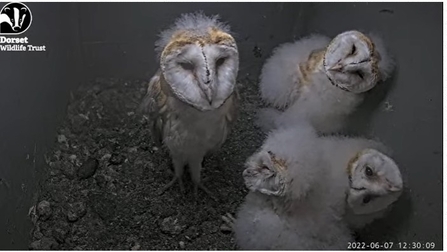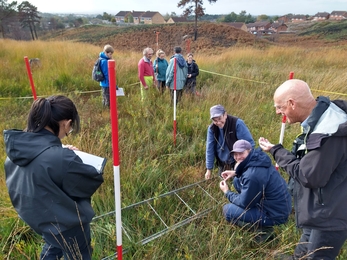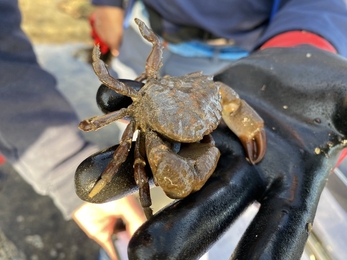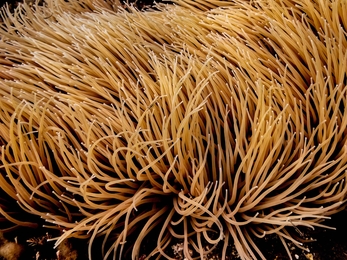Barn owl webcam
In early April, our barn owl webcam viewers were rewarded with the sight of four eggs in the nesting box at Lorton Meadows, in full colour thanks to the new upgraded webcam installed at the beginning of the season. The owlets entertained everyone throughout the spring and early summer with their intriguing preening and eating behaviours accompanied by their characteristic chitttering, screeching and hissing. All four owlets successfully fledged in the early summer which is quite an achievement for the parents.
The owlets may have fully fledged, but if you're lucky you can occasionally catch a glimpse of the parents taking shelter in the nesting box.




